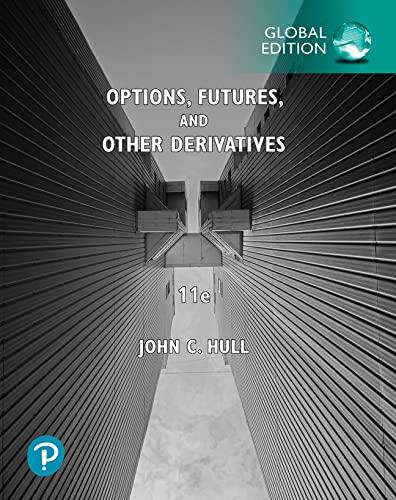
Q.4) Consider a coupon bond with 4 years left to maturity, paying annual coupons at the rate of 6%. Suppose that the discount rates are as follows: Maturity(t)Rate(rt)13.1%23.6%34.0%44.2%(inyears) Ignoring any default risk for the moment, solve the following exercises: a. Given the rates above, obtain the relative discount factors at times 1, 2, 3 and 4 and use all of them to calculate the value of the bond (with $100 par). b. Find the yield to maturity of the bond (to the nearest 1 basis point) using the "Solver"* function in Excel. c. Suppose now that some default risk exists and that the yield based on the expected cash-flows is estimated as equal to 7%. Calculate the bond's yield spread (a.k.a. credit spread). d. Assume that the bond is sold after 2.5 years: given the rates for years 1 to 4 above, calculate the dirty price of the bond. Calculate also the holding period returns respectively for: - The original bond investor (Hint: Consider the original purchase price this investor paid, the coupons she received, and the dirty price she receives from the bond's sale. For simplicity, ignore the issue of re-investment of coupons); - The new bond investor (Hint: Consider the dirty price this investor pays, the coupons she will receive and the par value she will get if she holds the bond until maturity. For simplicity, ignore the issue of re-investment of coupons). ("The "Solver" function in Excel is an Add-in. If you don't have it installed yet: on Excel go to FILE OPTIONS ADD-INS. In the list of add-ins select the "Solver Add-in" and press OK) Q.4) Consider a coupon bond with 4 years left to maturity, paying annual coupons at the rate of 6%. Suppose that the discount rates are as follows: Maturity(t)Rate(rt)13.1%23.6%34.0%44.2%(inyears) Ignoring any default risk for the moment, solve the following exercises: a. Given the rates above, obtain the relative discount factors at times 1, 2, 3 and 4 and use all of them to calculate the value of the bond (with $100 par). b. Find the yield to maturity of the bond (to the nearest 1 basis point) using the "Solver"* function in Excel. c. Suppose now that some default risk exists and that the yield based on the expected cash-flows is estimated as equal to 7%. Calculate the bond's yield spread (a.k.a. credit spread). d. Assume that the bond is sold after 2.5 years: given the rates for years 1 to 4 above, calculate the dirty price of the bond. Calculate also the holding period returns respectively for: - The original bond investor (Hint: Consider the original purchase price this investor paid, the coupons she received, and the dirty price she receives from the bond's sale. For simplicity, ignore the issue of re-investment of coupons); - The new bond investor (Hint: Consider the dirty price this investor pays, the coupons she will receive and the par value she will get if she holds the bond until maturity. For simplicity, ignore the issue of re-investment of coupons). ("The "Solver" function in Excel is an Add-in. If you don't have it installed yet: on Excel go to FILE OPTIONS ADD-INS. In the list of add-ins select the "Solver Add-in" and press OK)







